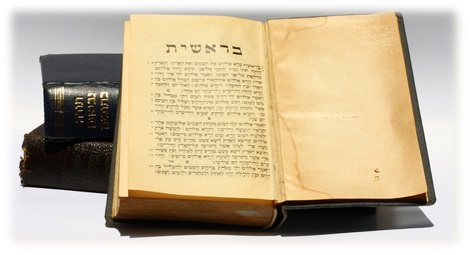 By Jeff A. Benner The language of the Ancient Hebrews is closely related to their agricultural and nomadic lifestyle. Each word must be understood through this culture rather than from our own modern western Greco-Roman culture. As an example, the Hebrew word מצוה (mitsvah) is usually translated as a command or commandment in most other translations but Hebraicly means the directions given to guide one on the journey. Hence, this word will be translated in the MT as "direction."
Vowel Pointings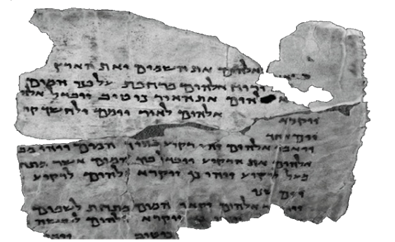 Figure 27 – Scroll Fragment from the Dead Sea caves of Genesis 1:1 to 1:9 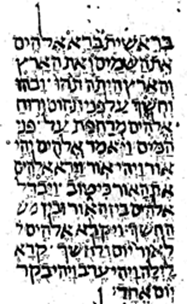 Figure 28 – Excerpt from the Masoretic text of Genesis 1:1 to 1:3 The ancient texts of the Hebrew Bible, such as found in the Dead Sea Caves were only written with consonants. The Masoretes added a system of vowel pointings, consisting of dots and dashes, that were added above and below each letter. These vowel pointings, called nikkudot (nikkud – singular) were developed to standardize pronunciation and to clarify words.  Table 1 – Nikkudot The Hebrew text of the Bible was originally written with only the twenty two letters of the Hebrew alphabet. About one thousand years ago a group called the Masoretes created a system of dots and dashes called "nikkud" and placed them above and below the consonants to represent the vowels. It was discovered in the Dead Sea Scrolls that the four Hebrew letters, the al, hey, waw and yud, were used as vowels. The Masoretes removed these vowels (usually the waw and yud) and replaced them with the nikkud. In Table 11 are some examples of Hebrew spellings of some Hebrew words in the Masoretic text and the Dead Sea Scrolls.  Table 2 – Vowels in the Masoretic text and the Dead Sea Scrolls The VerbA verb describes an action, such as the word "cut" in the sentence, "Jacob cut a tree." The one performing the action is called the subject. In this sentence, Jacob is the subject of the verb, the one doing the cutting. The one receiving the action of the verb is called the object. In this sentence, the tree is the object of the verb, the one being cut.
Tense There are four tenses in Hebrew verbs, perfect, imperfect, participle and imperative. In the English language the verb tenses are related to time; past, present and future, while the Hebrew verbs are all related to action. The perfect tense is a completed action and in most cases is related to the English past tense (he cut). The imperfect tense is an incomplete action and is closely related to the English present and future tenses (he cuts or he will cut). The participle can be a current action or one who performs the action (a cutting or cutter). The imperative identifies the action, similar to a command, with no reference to the subject (cut!). When the prefix ו (waw) meaning "and" is attached to the verb, the verb tense (perfect or imperfect) reverses. For this reason this letter, when used in this context, is called the reversing or consecutive waw.
 Table 3 – Perfect Tense Verbs Voice Each verb also includes voice of which there are three; active, passive or reflexive. The active voice identifies the action of the verb as coming from the subject (he cut). The passive voice does not identify the origin of action placed on the subject of the verb (he was cut). The reflexive voice places the action of the verb onto the subject (he cut himself). Mood Each verb also includes mood of which there are three; simple, intensive or causative. The simple mood is simple action of the verb (he cut). The intensive mood implies force or emphasis on the verb (he slashed or hacked). The causative mood expresses causation to the verb (he casued a cut).
 Table 5 – Verb Forms Below are a few common suffixes (in bold letters) that identify the object of a verb.  Table 6 – Suffixs Besides the "simple" verbs (called qal verbs) used above, seven other verb forms are used that slightly change the meaning of the verb. However, we will only look at the three most common. The niphil is the passive form and adds the prefixed letter נ (ni). The hiphil is the causative form and adds the prefixed letter ה (hi) and the letter י (iy) as an infix. The Hitpa’el is the reflexive form and adds the prefixed letters הת (hit).  Table 7 – Niphil, Hiphil and Hitpa’el verb forms A few other verb forms differ from those we have previously discussed. The first is the infinitive verb, which does not include a tense (perfect or imperfect), subject or object of the verb. It only identifies the action, such as "listen." The second is the imperative, which like the infinitive, does not include a tense or object, but it does identify the gender and number of the subject as well as the action of the verb, but more as a command, such as "listen!". The third is the participle, which is used much like our present tense verbs in English, such as "listening." Below are examples of these verb forms.  Table 8 – Infinitive, Imperative and Participle verb froms While all of this appears complex and confusing at first it should be noted that the majority of the Hebrew verbs in the Bible are written in the pa’al form and in the perfect tense, third person, masculine, singular. The Verb, Subject and Object In English, the general order of words is the subject of the verb, the verb and then the object of the verb. As an example, using Revised Mechanical Translation, from Genesis 1:12 we have the sentence, "and the land brought out grass." The word "land" is the subject of the verb, "brought out" is the verb" and "grass" is the object of the verb. In Hebrew, this order is slightly different. The general order of Hebrew sentences is slightly different and is verb, subject of the verb and then the object of the verb. The Hebrew behind the English sentence above is ותוצא הארץ דשא. The first word, ותוצא, is the verb, the second word, הארץ, is the subject of the verb and he third word, דשא, is the object of the verb. Hebrew gender All Hebrew pronouns will be translated as "he" or "she." This may appear strange at first as a word like "ground," a feminine word, will be identified as a "she" (see 4:12). This is an important issue as knowing the correct gender of a pronoun can influence interpretation. A classic example is found in 4:7 where most translations read "...sin is crouching at the door; its desire is for you." It is usually assumed the word "its" is referring to the word "sin" but, knowing that the word "sin" is a feminine word and "its" is a masculine pronoun we discover that the word "its" cannot be referring to the "sin."
The NounThe most common noun form is the use of the two or three letter root. From the parent root אב (av), meaning a tent pole, comes the noun אב (av) meaning "father". As was mentioned previously, all nouns are action oriented and the full understanding of the noun אב is "the one who holds up the tent/house". Just as the tent pole supports the tent, the father supports the family within the tent. The root פתח (P.T.Hh) is the base for the verb פתח (patahh) meaning "to open" and the noun פתח (petahh) meaning a door. Noun Derivatives Additional nouns are also formed out of the base root by adding specific letters as prefixes, infixes and suffixes, in specific places within the root. The noun derivative מפתח (maph'teach) meaning a key is formed by adding the letter מ to the front of the noun פתח (petahh - a door). Some of the most common noun derivatives are formed by placing a מ (m) or ת (t) before the root or a י (i) or ו (o or u) within the root. Feminine Derivatives In Hebrew all nouns are either masculine or feminine. In most cases the nouns and noun derivatives are masculine and are converted into feminine nouns by adding one of four suffixes; ה (ah), ת (et), ות (owt), or ית (iyt). Generally, masculine nouns are concrete while feminine nouns are abstract. Combination Derivatives Additional noun derivatives are formed by combining different prefixes, infixes and suffixes. The four feminine suffixes can also be added to any of the other noun derivatives resulting in a wide variety of possible nouns. Plural Nouns Nouns are made plural by adding the suffix ים (iym) or ות (ot). Generally the ים is used for masculine nouns and ות for feminine nouns. In some cases masculine words, usually very ancient words, will use the ות suffix. The Hebrew words אב (av - father) andאור (or - light) are masculine words but are written as אבות and אורות in the plural. In all modern languages the plural is always quantitative while in Ancient Hebrew a plural can be quantitative or qualitative. An example of this is the word בהמות (behemoth – see Job 40:15). This word is the plural form of the singular בהמה (behemah), meaning beast, but refers to a very large beast rather than more than one beast. One of the most common uses of the qualitative plural is the word אלהים (elohiym) which can be translated as "gods" (quantitative) or as "God" (qualitative). Grammatical Tools Hebrew uses nouns for other functions within the sentence. They can be used as adjectives, adverbs, prepositions, conjunctions, etc. The noun עקב (eqev) can be the "heel" of the foot but, it can also mean "because" in the sense of being on the heel of the previous phrase. Because the Ancient Hebrew language does not make distinctions between these types of words the Lexicon lists them all as nouns and noun derivatives. Articles, Conjunctions and PrepositionsSpecific letters are used in Hebrew to represent the article, conjunction, and preposition and are prefixed to nouns (and sometimes verbs). Below are all of these prefixes (in bold) attached to the Hebrew noun ארץ (erets, Strong’s #776). 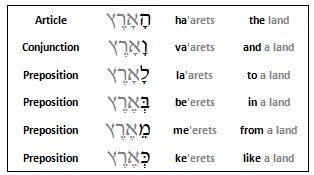 Table 9 – Articles, Conjunctions and Prepositions AdjectivesAn adjective is a word that provides description to a noun. For instance, the Hebrew word טוֹב (good) is a common adjective that can be found in the following phrase meaning "good day."  Notice that in Hebrew the adjective follows the noun which it describes. If the noun is prefixed by the article ה (ha), then the adjective will be as well, such as we see in the next phrase meaning "the good mountain."  The adjective will also match the gender of the noun. In the last two examples, the words יוֹם and הַר are masculine nouns therefore; the masculine form טוֹב is used. The word אֶרֶץ (land) is a feminine word so the feminine adjective טוֹבָה is used in the following phrase meaning "good land."  The adjective will also match the number (singular or plural) of the noun. In each of our previous examples, the singular form of the word טוֹב is being used because the nouns it describes are singular. In the phrase, meaning "good houses," the word בֵית (house) is written in the plural form, therefore the adjective is as well.  Hebrew PronunciationVowels Four of the Hebrew letters double as consonants and vowels. These are the א (al), ה (hey), ו (waw) and the י (yud). The al can be a glottal stop (silent pause) or the vowel sound "a". The hey is an "h" as a consonant or an "e" as a vowel. The waw is a "w" as a consonant or an "o" or "u" as a vowel. The yud is a "y" as a consonant or an "i’ as a vowel. The waw and the yud are the two most commonly used as vowels in Hebrew words. When the waw appears at beginning of a syllable it will use the consonantal "w" sound. The same with the yud which will use the consonantal "y" when at beginning of a syllable.
Spirants and Stops A spirant is a letter whose sound can be prolonged. Some examples of this from the English language are the v, z, f, and sh. A stop is a letter whose sound ends abruptly such as the b, p, d and t. A few of the Hebrew letters will have a different pronunciation depending on their position within the word. The letter ב will usually be pronounced as a stop (b) when at the beginning of the word and as a spirant (v) when it is anywhere else in the word. For example the word בר is pronounced "bar" while the word רב is pronounced "rav". Another letter that will change is the letter kaph – כ. When at the beginning of a word it will be pronounced as a stop (k), otherwise it will be pronounced as a spirant (kh – pronounced like the ch in the name Bach). The only other letter that will change is the letter pey – פ. When at the beginning of a word it will be a stop (p), otherwise it will be a spirant (ph). Syllables There are two types of syllables, open and closed. A closed syllable will include a consonant-vowel-consonant combination while an open syllable will have a vowel-consonant combination. The vowel may be one of the four consonant/vowel letters, usually the yud (I) or the waw (O or U) or an implied vowel. In most cases the final syllable will be a closed syllable. The word ברית (covenant) will have two syllables. The first is ב, an open syllable pronounced "be", and the second is רית a closed syllable pronounced "riyt".
Ancient Hebrew Philosophy Figure 29 – Picture experiment If you were to ask a Westerner, such as from the Americas or Europe, what they see in the picture above, they would probably say "a deer." However, if you were to ask an Easterner, such as from Japan or China, what they see, they will probably say "a forest." The difference is that the Western thinker focuses in on one point, while the Eastern thinker looks at the whole of the image.  Figure 30 – An experiment demonstrating the different between Western and Eastern thought In an extensive study on these different forms of philosophy, a wide range of people from America, Canada and Europe were asked if they thought the boy in the middle of the picture on the left was happy or sad, they all said "happy." They were then asked if they thought the boy in the middle of the picture on the right was happy or sad, they all said "happy." Then a wide range of people from Asia, including Japan and China, were asked the same questions. When asked if the boy on the left was happy or sad, they all said "happy." When they were asked if the boy on the right was happy or sad, they all said "sad."
What does it mean to "tell someone about another's name?" Does it mean to tell others how to write or pronounce the name? From a Western perspective yes, but from a Hebraic perspective a name is much more than its pronunciation; it is the character of the individual, his ethics, workmanship, attitude, dependability, resourcefulness, compassion, honor, etc. When the Bible teaches us to "tell others the name of Yahweh," it isn't telling us to teach others how to write or pronounce it correctly; it is telling us to teach Yahweh's character. Hebrew CultureA language is always closely connected to the culture of the people using that language. Take for example the word "rain." In an agricultural community, "rain" can make the difference between success and failure, but in urban setting "rain" is considered a nuisance. This is important to keep in mind when reading the Biblical text. If we attempt to interpret the text based on our own personal cultural perspective, we will undoubtedly make errors in our interpretations. Take for example the flood. In our experiences floods are equated with death and disaster. However, in the ancient world of the Hebrew people, the annual floods bring the much needed water from the mountainous regions to lower desert regions. 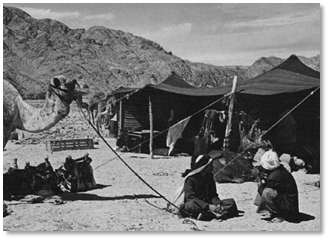 Figure 31 – A goat hair tent of the Bedouin, modern day nomads of the Near East
The above passage from Isaiah is making an analogy between the heavens and a tent. In order to properly understand this analogy, one must understand the unique design of the tents of the Ancient Hebrews. These tents were made from woven black goat hair. When sitting inside the tent, it is very dark, but pin holes of light can be seen coming through the panels and appear like the stars of the night sky. When it rains, the hair fibers swell and seal the tent and the pin holes of light disappear, just as they do when the clouds come, blocking the view of the stars. When an Ancient Hebrew looks up at the night sky he sees God's tent over him, in the same way that his own tent covers over and protects his family.
The Language and Culture ConnectionBenjamin Lee Whorf stated, in what has become known as the Whorf hypothesis, that; "language is not simply a way of voicing ideas, but is the very thing which shapes those ideas." [13] An example of this is how one perceives of time. In our modern western culture we view time in the sense of the past, present and future, a fixed and measurable progression time.
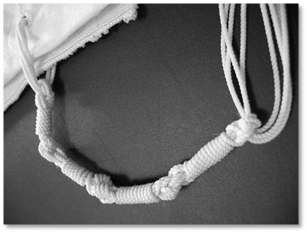 Figure 32 – A tsiytsiyt In Numbers 15:38 we read; "Speak to the sons of Israel and say to them, make tsiytsiyt on the corners of your garment." The Hebrew word ציצית (tsiytsiyt) is a noun derived from the word ציץ (tsiyts).  Figure 33 – A blossom A ציץ (tsiyts) is the "blossom" of a tree, which in time will become a fruit. The tsiytsiyt then is a blossom, not in appearance, but in function. The function of the tsiytsiyt is to be a reminder to the wearer to produce fruit, fruit being the observance of the commands, as stated in verse 39, "remember the commandments," the teachings of God, which according to Psalm 1:2,3, is like producing fruit.
The Agricultural aspect of the Hebrew Language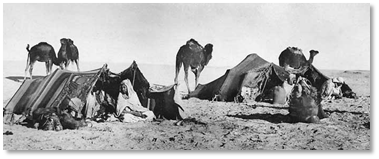 Figure 34 – Bedouins The Ancient Hebrews were nomadic agriculturalists who migrated from pasture to pasture, watering hole to watering hole. Their entire lives were spent in the wilderness and this lifestyle had a significant effect on their language.
East and WestThroughout the world there are two major branches of Philosophy, Western and Eastern. Western Philosophy has its beginnings in the sixth century B.C. in Greece with such philosophers as Socrates, Plato and Aristotle. Eastern Philosophy has its roots in the ancient past and was the philosophy of all ancient cultures of the Far East (including China and Japan), Middle East (Including India and Babylon) and Near East (including Egypt and Israel).
 Figure 35 – Concrete (left) and abstract (right) art Just as artwork may be created in the concrete or the abstract, words can also be created in the concrete or the abstract. A concrete word, idea or concept is something that can be perceived by the five senses. It can be seen, heard, smelled, tasted or touched. An abstract is something that cannot be perceived by the five senses.
Concrete and Abstract ThoughtThe Eastern mind communicates with concrete words and concepts. Concrete thought is the expression of concepts and ideas in ways that can be seen, touched, smelled, tasted and/or heard. All five of the senses are used when speaking, hearing, writing and reading the Hebrew language. An example of this can be found in Psalms 1:3;
In this passage the author expresses his thoughts in concrete terms such as; tree, streams of water, fruit and leaf.
Hebrew Descriptions Figure 36 – An oak tree and a ram In our minds we would never relate an oak tree to a ram or view them as the same. The reason being is that we relate to features and appearances. However, the Hebrews relate to the function and in the case of the oak and the ram, they function in the same way. An oak tree is a very hard wood and the horns and skull of a ram are equally as hard. For this reason, the Hebrew word איל (ayil) is used for a ram (see Genesis 22:13) and an oak (see Isaiah 1:29).
From our Modern Western mindset, we assume that this passage is describing the "appearance" of the ark. But this is not so, the dimensions are not given to tell us what it "looked like," but instead to tell us that it is very large as it is going to hold a large number of animals.
Static and DynamicIn our Modern western language verbs express action (dynamic) while nouns express inanimate (static) objects. In Hebrew all things are in motion (dynamic) including verbs and nouns. In Hebrew sentences the verbs identify the action of an object while nouns identify an object of action. The verb מלך (malak) is "the reign of the king" while the noun מלך (melek) is the "the king who reigns". A mountain top is not a static object but the "head lifting up out of the hill". A good example of action in what appears to be a static passage is the command to "have no other gods before me" (Exodus 20:3). In Hebrew thought this passage is saying "not to bring another one of power in front of my face". BalanceVery few sermons in our Western synagogues and churches would include the passage "I [God] form the light and create darkness, I make peace and I create evil, I am the LORD who does all of these" (Isaiah 45:7) as our Western mind sees these two forces as opposing opposites while the Eastern mind sees them both as equals and necessary for perfect balance. In the Western mind, God is only good and therefore unable to create evil. The Eastern mind sees God as a perfect balance of all things including good and evil.
ActionThe Hebrews are active people and their vocabulary reflects this lifestyle. The Greek culture recognizes words such as knee and gift as nouns which by themselves impart no action. But, in Hebrew, just as in most Ancient languages [18], there is very little distinction between nouns and verbs as all words are related to an action. The Greek mind designates a knee and a gift as inanimate nouns unrelated in meaning. The Hebrew mind sees the knee (ברך / B.R.K) as "the knee that bends" and a gift (ברכה / berakah) as "what is brought with a bent knee".
Past and futureAnother example of differing cultural perspectives is how different cultures perceive time. In our modern Western world we view the past as behind us and the future as ahead of us. In Biblical Hebrew, the word for "yesterday" (the past) is תמול (temol), which comes from the root מול (mul) meaning "in front." The Biblical Hebrew word for "tomorrow" (the future) is מחר (mahher), which comes from the root אחר (ahher) meaning "in back." Therefore, from a Biblical Hebrew perspective, the past is in front and the future is behind. We see time from the perspective of passing through it. As we have walked through the past, we see it as behind us and the future, which we have not yet walked in, is in front of us. The Hebrews saw time from the perspective of observance. The past is known and therefore can be seen (in front of the observer), but the future is not known and therefore cannot be seen (behind the observer). Ancient Hebrew SpeechEach culture has its own unique style of speech where words and phrases are used that are not meant to be literal and can only be understood correctly if one is familiar with the style of speech used. If these unique words and phrases are heard or read literally, a completely different meaning will be assumed that was not intended by the author. IdiomsAn idiom is defined as a manner of expression peculiar to a given language, culture or people whose meanings cannot be understood through the context of the words alone. We use idiomatic words and phrases all the time without realizing that we are doing it. Below are just a few examples of idioms peculiar to the English language of America involving parts of the body.
When someone from another culture hears or reads these idioms, there is no possible way to comprehend the meaning unless an outside source is consulted for interpretation. To demonstrate how difficult it is interpret an idiom, consider the following idiom from Mexico, "The farmer went into the field and hung up his tennis shoes".
EuphamismsA euphemism is the use of one word in place of another such as the common euphemisms used today in our culture.
Just as in the case of idioms, the true meaning cannot be understood unless one is familiar with the euphemism such as can be found in Psalms 24:7 which reads;
How does a gate lift up its head? The word "gate" is a euphemism for a "judge". The cities in Israel were often surrounded by walls. At the gates of these walls the judges would hold court. Hence, the judges were called "gates". GenderAll Hebrew nouns, verbs, adjectives and most pronouns identify gender, either masculine or feminine such as we can see in the first two verses of Genesis.
The identity of a words gender is essential in translation as well as interpretation. Take Genesis 4:7 as an example.
The most common interpretation of this verse is that Cain is told that he must control the sin. While this verse is translated appropriately, this interpretation is incorrect becase the translation has erased the genders of the verse. Below is the same verse but adding the gender according to the Hebrew.
While the ASV uses the word "it" the Hebrew would literally be translated as "him" as seen in the KJV. There is no "it" in Hebrew; all things are either a "him/he" or a "her/she". The verse says that Cain is to control "him", and since "sin" is a feminine word, sin cannot be the "him". ^ 12. I should note that Hebrew verb stems, such as שמע, are not actual words and cannot be pronounced until they are conjugated. Therefore, I will simply transliterate each letter of the verb stems. For the verb stem שמע this will be "Sh" for the letter shin (ש), "M" for the letter mem (מ) and "Ah" for the letter ayin (ע). ^ 13. Understanding the whole student, Rowman & Littlefield Education, 2007, page 34. ^ 14. Thorleif Boman, Hebrew thought compared with Greek, (Westminster Press, 1970) ^ 15. Victor H. Matthews, Manners and Customs of the Bible, (Hendrickson, 1991) ^ 16. George Adam Smith, The Hebrew Genius as Exhibited in the Old Testament, (1944 P.10.) ^ 17. Dan Everett, Endangered Languages and Lost Knowledge, Long Now Foundation Seminar, March 20, 2009 ^ 18. Giorgio Fano, The Origins and Nature of Language (Indiana University Press, Bloomington, 1992) 66 |



